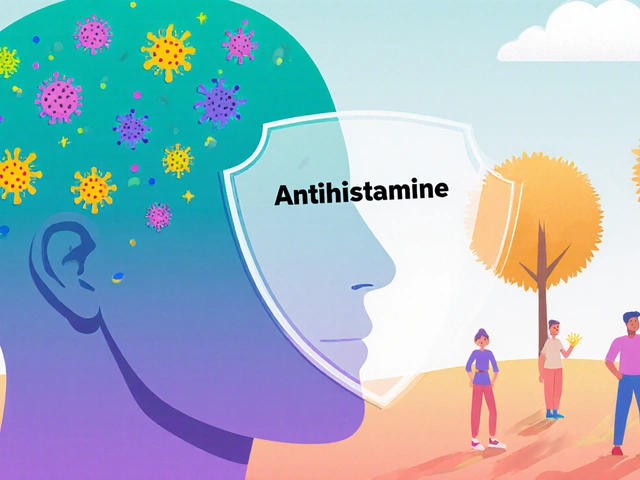Microneedling for Mottled Skin Discoloration: Real Results and Surprising Perks
April 28 2025Fluoxetine (Prozac): What You Should Know
Thinking about fluoxetine? Many people know it as Prozac. It’s a widely used SSRI antidepressant for depression, anxiety, OCD, and some eating disorders. This page gives straight facts—how it works, usual dosing, what side effects to watch for, and smart tips if you’re considering buying medicine online.
How fluoxetine works and common doses
Fluoxetine boosts serotonin in the brain, which can help mood and reduce anxiety. Doctors usually start with 10–20 mg a day for adults, then adjust after a few weeks based on response. Some conditions or people need higher doses—do not up the dose on your own. One useful thing about fluoxetine is its long half-life: it hangs around longer than many other SSRIs, so missing a single dose is less likely to cause immediate withdrawal. Still, take it regularly and follow your prescriber’s plan.
Expect to wait 4–6 weeks to notice real changes in mood or anxiety. If symptoms don’t improve or you get worse, tell your doctor. For kids and young adults, prescribers watch mood and behavior closely because antidepressants can raise suicidal thoughts in some people under 25.
Side effects, interactions & safe buying tips
Common side effects include nausea, sleep changes, headache, tremor, and sexual side effects. Usually these ease after a few weeks. Serious reactions are rarer but worth knowing: signs of low sodium (weakness, confusion), severe allergic reaction, or any sudden worsening of mood or thoughts of self-harm—seek help right away.
Fluoxetine interacts with several drugs. Don’t mix it with MAO inhibitors, and be cautious if you take blood thinners or NSAIDs—bleeding risk can increase. Also watch for serotonin syndrome (high fever, fast heartbeat, agitation, muscle stiffness) if you combine multiple serotonin drugs. Always give your doctor a full list of medicines and supplements.
Buying fluoxetine online? Be careful. Use licensed pharmacies that ask for a prescription. Red flags include extremely low prices, no address or pharmacist contact, and sites that skip prescriptions. Check for seals like PharmacyChecker or national pharmacy registries. If you live in the US or UK, confirm the site follows local rules. Keep your records: pharmacy receipts, prescription copies, and package tracking.
Stopping fluoxetine suddenly can cause problems for some people. Because it leaves the body slowly, withdrawal may be milder than with other SSRIs, but tapering under medical supervision is still the safest path. If you plan to stop, talk to your prescriber about a step-down schedule and what withdrawal symptoms to expect.
If you have questions about dosing, interactions, or where to buy safely online, use the site's guides on buying antidepressants and comparing pharmacies, and always check with a healthcare pro before making changes.
 2 Jul
2 Jul
Sarafem: Uses, Effects, and What to Know Before You Start
Unpack everything about Sarafem: its purpose, side effects, real-life facts, and what to expect. Straight answers for anyone curious about this treatment.
Read More... 9 May
9 May
Fluoxetine for Premenstrual Dysphoric Disorder: How it Can Help
As someone who has experienced Premenstrual Dysphoric Disorder (PMDD), I was eager to learn about Fluoxetine and how it can help alleviate symptoms. Fluoxetine, commonly known as Prozac, is an antidepressant that has proven to be effective in treating PMDD. It works by balancing serotonin levels in the brain, resulting in improved mood and emotional stability. I've personally found relief from the emotional and physical symptoms of PMDD after starting Fluoxetine. If you struggle with PMDD, it might be worth discussing Fluoxetine with your healthcare provider to see if it could be a suitable treatment option for you.
Read More...




